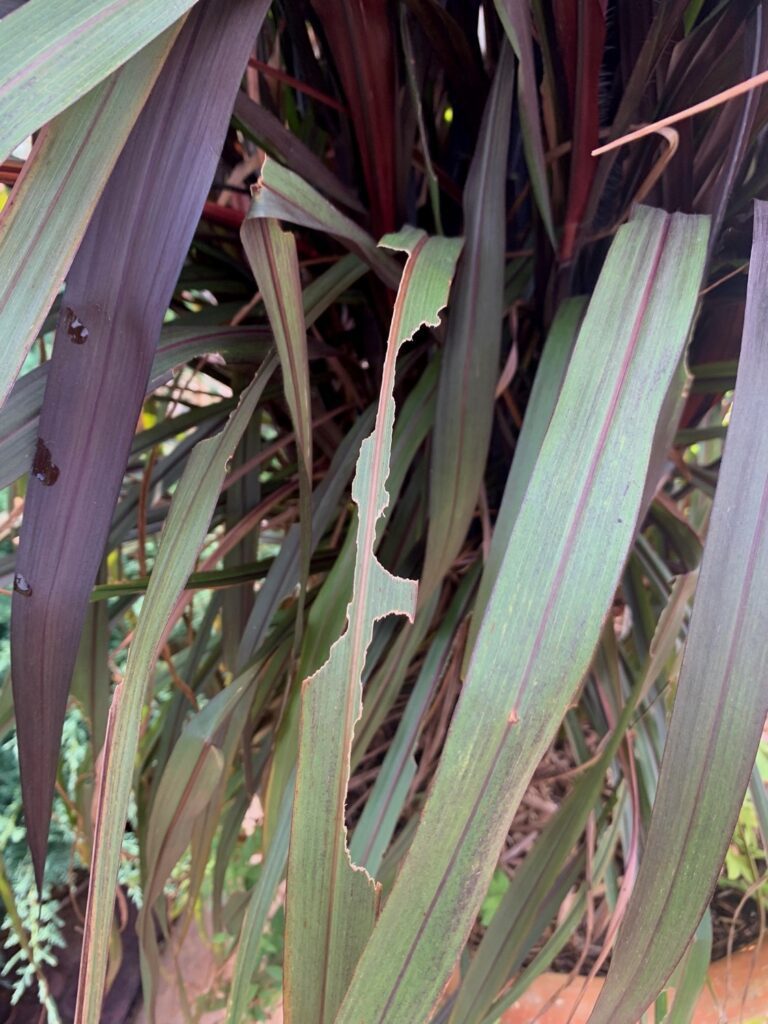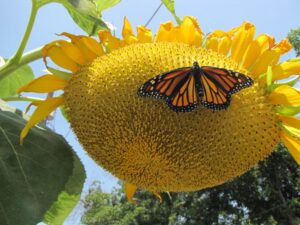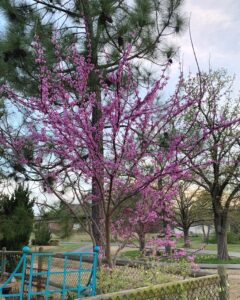Kathy Berryhill
Creek County Master Gardener
Ornamental grasses are a favorite in the landscape. Purple Fountain Grass, with its dark foliage, is a great addition to beds and flower pots. Pink Muhly Grass usually blooms brilliantly in the fall and all kinds of Pampas grasses aåre used to add texture and volume. A new tropical grass called Vertigo Fountain Grass is fantastic with its deep green and maroon color. Additionally, it can grow to a height of 5 feet. It performed beautifully…until the grasshopper population decided to feast on it. Eating huge portions of the leaf, the grasshopper left the damaged leaves an unsightly mess.
Until this year, I have ignored this pest and waited for the balance of nature to deal with the problem. But this year the resulting damage has made me rethink my approach. Oklahoma is blessed with forest and grassland and over 130 species of grasshoppers. In our area we mainly have problems from the differential and two-striped species. While difficult to control in an urban setting, their damage can be lessened by using barriers, insecticides, and careful plant selection.
Grasshoppers lay pods of 8-30 eggs in the soil during the fall. These eggs hatch in the spring and go through 5 instars (periods of molting) before reaching adulthood. This process takes from 35-50 days. Luckily, most grasshoppers only produce one generation a year, but factors such as temperature and the presence of predators can greatly affect the numbers that survive.
The pesky grasshoppers feed on a wide variety of grasses and broadleaf plants. While younger grasshoppers can’t move far, the winged adult can fly for miles to find new food sources. They especially like gardens that have available moisture and lots of food.
This pest will often be overlooked until they begin feasting on our beautiful flowers, vegetables, and ornamental plants. Even if a plant has been sprayed and effectively destroyed some grasshoppers, once the insecticidal residual dissipates, new arrivals will begin feeding on the plant again.
Grasshopper control is dependent on patience and possibly cooperation from neighboring gardeners. Selecting plants that are not subject to damage can be helpful. Favorites such as Althea, American Beautyberry, Artemisia, Hardy Aster, Spiraea, Jasmine, Butterfly Bush, Cannas, Burning Bush, Hardy Hibiscus, Euonymus, Juniper, Liriope, and Forsythia are just a few on the list of plants that don’t appeal to the grasshopper’s taste buds. A trap crop of zinnias or other desirable plants can be planted around plants that are prone to grasshopper damage. Hopefully, this diversion will reduce the unsightly impact on other plants!
If a chemical insecticide is used, it works best on small grasshoppers, but the timing must be right. Treating soil in mid-spring is helpful as insecticides begin breaking down when mixed with water and exposed to sunlight. As always, when using insecticides, caution is advised so that beneficial insects and pollinators are not destroyed at the same time. Consult the OSU Factsheet Consult EPP-7306 Ornamental and Lawn Pest Control for Homeowners for directions on application. Botanical and biological products such as Nosema Locustae and Beauveria Bassiana can be used and may reach a 30%-40% effectiveness in controlling populations.
It’s always something in the garden, but hopefully, a little knowledge and trial and error can help with this pest!
Happy Gardening!












